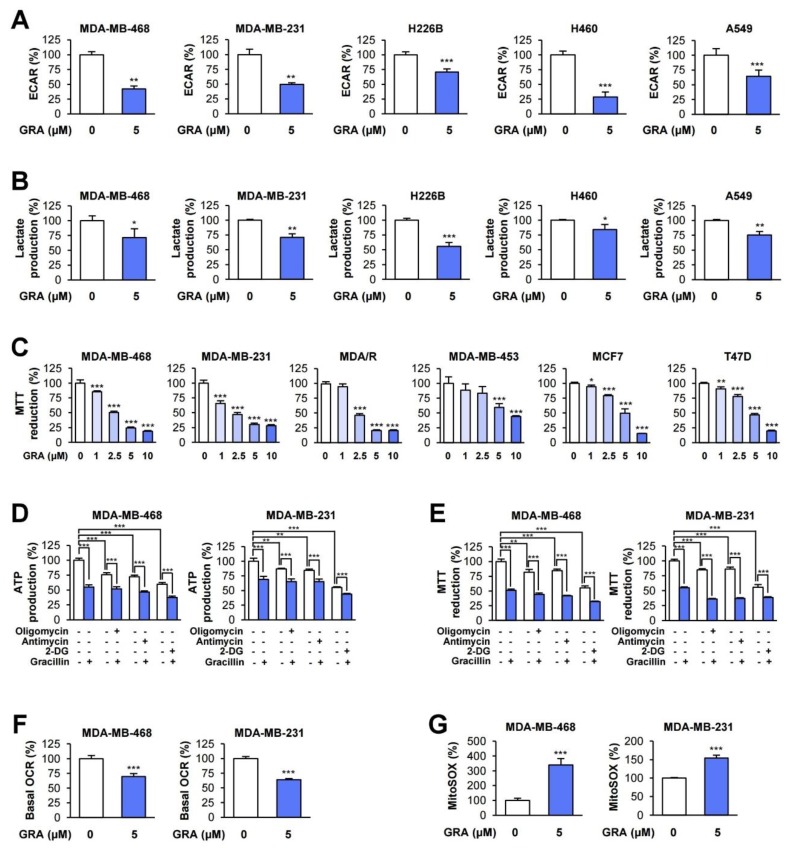Figure 2.
Inhibitory effect of gracillin on glycolysis and OXPHOS. (A–F) The effect of gracillin on basal extracellular acidification rate (ECAR) (A) and oxygen consumption rate (OCR) (F) was determined by using a Seahorse XF analyzer. (B) The inhibitory effect of gracillin on lactate production in lung and breast cancer cells was determined using a commercially available kit. (C) The 3-(4,5-dimethylthiazol-2-yl)-2,5-diphenyltetrazolium bromide (MTT) assay was performed to determine the effect of gracillin on dehydrogenase activity in mitochondria in breast cancer cells. Cells were treated with increasing concentrations of gracillin for three days. (D,E) Triple-negative breast cancer (TNBC) cells were treated with oligomycin (5 μM), antimycin (10 μM), or 2-deoxy-D-glucose (2-DG; 25 mM) alone or in combination with gracillin (5 μM) for 6 h. The levels of adenosine triphosphate (ATP) production (D) and the MTT reduction (E) were determined as described in Materials and Methods. (G) The upregulation of mitochondrial reactive oxygen species (ROS) by treatment with gracillin was determined using the fluorescent probe MitoSOX as described in Materials and Methods. The bars represent the mean ± SD; * p < 0.05, ** p < 0.01, and *** p < 0.001, as determined by a two-tailed Student’s t-test by comparison with the indicated group (D,E) or vehicle-treated control group (A–C,F,G). Con: control; GRA: gracillin.

